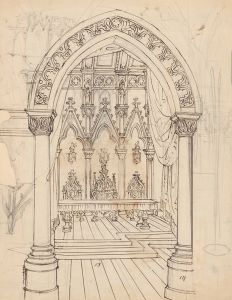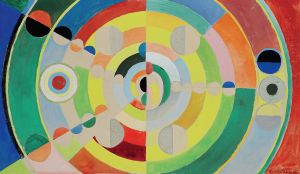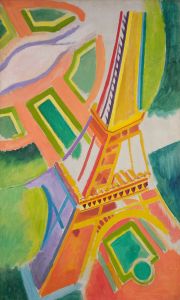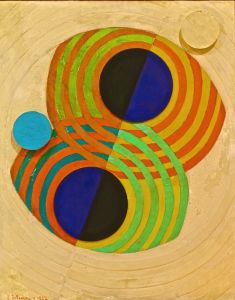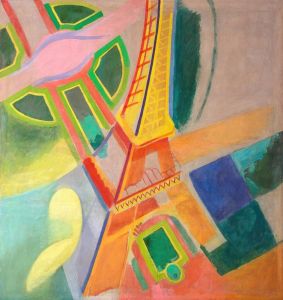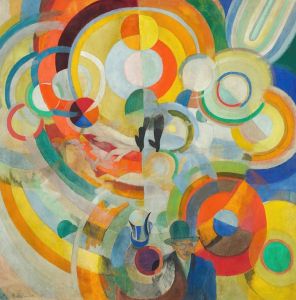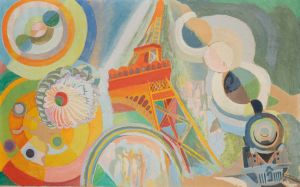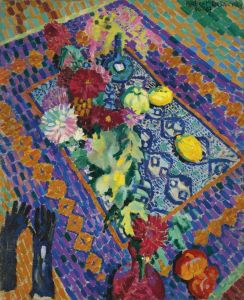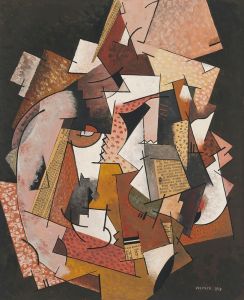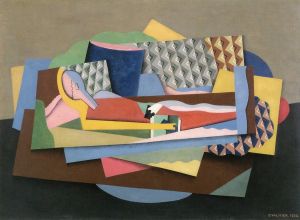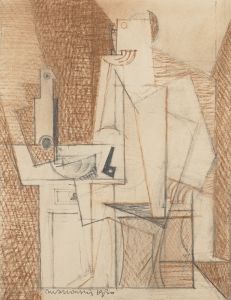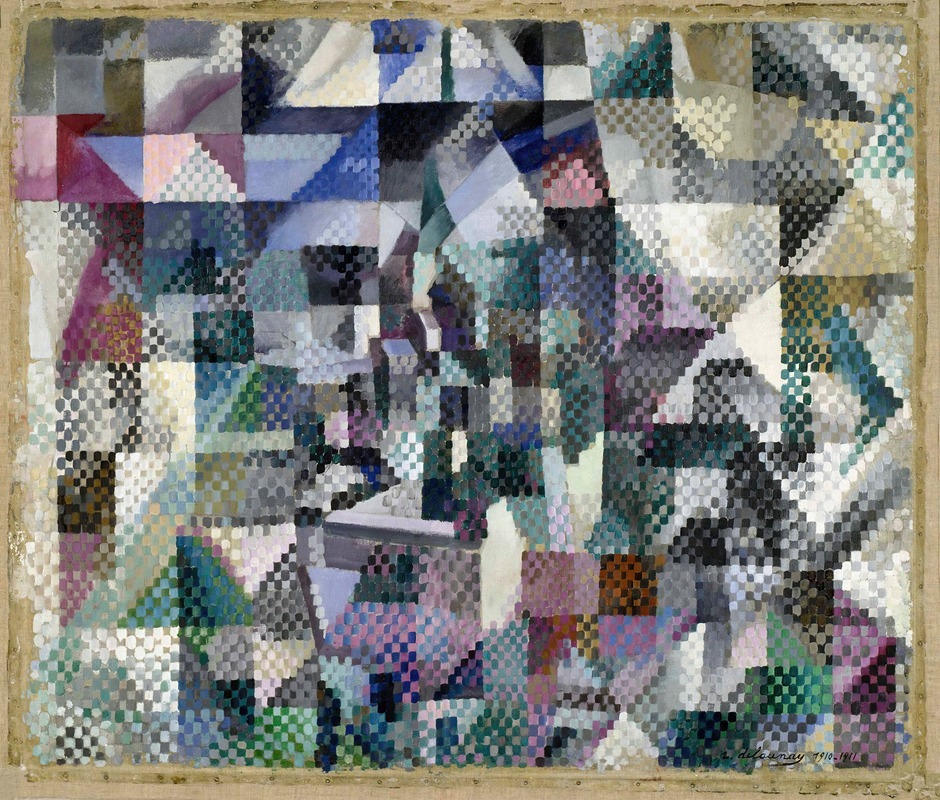
Window on the City No. 3.
A hand-painted replica of Robert Delaunay’s masterpiece Window on the City No. 3., meticulously crafted by professional artists to capture the true essence of the original. Each piece is created with museum-quality canvas and rare mineral pigments, carefully painted by experienced artists with delicate brushstrokes and rich, layered colors to perfectly recreate the texture of the original artwork. Unlike machine-printed reproductions, this hand-painted version brings the painting to life, infused with the artist’s emotions and skill in every stroke. Whether for personal collection or home decoration, it instantly elevates the artistic atmosphere of any space.
"Window on the City No. 3" is a painting by Robert Delaunay, a French artist known for his contributions to the Orphism art movement, which emphasized the use of vibrant colors and abstract forms. The painting was created in 1911, during a period when Delaunay was exploring the interplay between light, color, and form in his work. This piece is part of a series of paintings in which Delaunay depicted urban landscapes, particularly focusing on the dynamic energy of modern cities.
The artwork reflects Delaunay's fascination with Paris, specifically its architectural and cultural landmarks. In "Window on the City No. 3," the viewer is presented with a fragmented and abstracted view of the city, as seen through a window. The composition is characterized by overlapping geometric shapes and bold, contrasting colors, which create a sense of movement and vitality. This approach aligns with Delaunay's interest in capturing the rhythm and dynamism of urban life.
One of the key elements of the painting is its use of simultaneity, a technique Delaunay developed to depict multiple perspectives and moments in time within a single image. This method was influenced by the Cubist movement, but Delaunay's work diverged from Cubism through its emphasis on color and light rather than monochromatic tones and rigid structures. "Window on the City No. 3" exemplifies this distinction, as it radiates with vibrant hues and a sense of luminosity.
The painting is also notable for its depiction of the Eiffel Tower, a recurring motif in Delaunay's work. The tower, an iconic symbol of modernity and progress, is integrated into the composition in a fragmented and abstract manner, reflecting Delaunay's innovative approach to representation. By incorporating this landmark, the artist connects the painting to the broader theme of urban transformation and technological advancement in the early 20th century.
"Window on the City No. 3" is considered an important example of Delaunay's transition from figurative to abstract art. It demonstrates his ability to merge the visual language of modernism with a personal, poetic vision of the world. Today, the painting is recognized as a significant contribution to the development of abstract art and remains an influential work in the history of modern painting.





